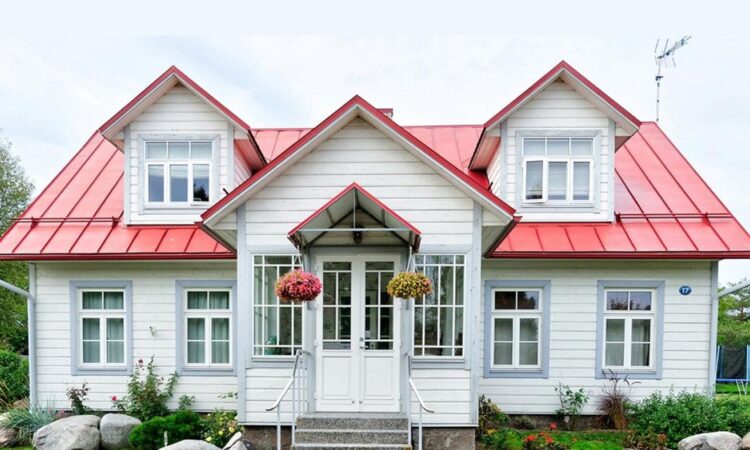
For most people, a home isn’t just where they live – it’s one of their most powerful financial assets. As you make mortgage payments and your property’s value grows, you build home equity, or the portion of your home you truly own. That equity can be a valuable tool for funding goals, reducing debt, and creating long-term wealth without having to sell your home.
According to Zillow, U.S. home values rose by 57% from early 2020 to June 2025, adding roughly $20 trillion in value. This surge helped homeowners build record levels of equity, with Intercontinental Exchange reporting that homeowners entered Q3 of 2025 holding a collective $11.6 trillion in accessible equity, averaging $213,000 per homeowner.
Leveraging that equity strategically can be a powerful way to manage your debt, fund opportunities, and reach other short- or long-term financial goals. Splitero explores what “home equity” means, how to access it, and how to use it to support your financial goals.
Key Takeaways
- Home equity is the difference between what your home is worth and what you owe on it.
- Paying down your principal mortgage balance is the easiest way to grow your equity in your home. Making home improvements that increase your home’s value can also grow your equity.
- Common ways to access home equity include cash-out refinancing, home equity loans, home equity lines of credit, and home equity investments.
- You can use your home equity to pay off high-interest debt, invest, start a business, or improve your property to boost its value.
- The best approach for you depends on your financial goals, timeline, and risk tolerance.
What is home equity?
Home equity represents your ownership stake in your property; the part of your home’s value that belongs entirely to you. It’s calculated by taking your home’s current market value and subtracting what you owe on your mortgage or any other loans tied to the property.
For example, if you buy a $300,000 home with a $30,000 down payment, you start with 10% equity. After a few years, if your home’s value rises to $350,000 and you’ve paid $40,000 toward your mortgage, your equity would increase to $70,000 (or 20%).
How to build equity in your home
Your home equity is influenced by factors both inside and outside of your control as a homeowner. However, there are two key things you can do to increase your home equity.
- Mortgage payments: Making consistent payments to your mortgage principal is the simplest way to grow your ownership share in your home. Additionally, paying a higher amount than your minimum monthly payment is a great way to build more equity in a shorter timeframe.
- Home improvements: Home improvement and remodeling projects can increase the value of your home by adding tangible value. This can include outdoor improvements to increase curb appeal, upgrading appliances, remodeling your bathroom, and other home projects that influence how much your home is worth.
Market conditions and local property values can also affect your home’s value over time, though these factors are largely outside your control.
How to leverage home equity
There are several ways to access your home equity, and each option has its own advantages and disadvantages. Here’s a brief overview of the most common options available.
- Cash-out refinance: With cash-out refinancing, you replace your mortgage with a larger one and pocket the difference. This can be a good option when you need cash and interest rates are lower than the rate on your current mortgage. However, it’s always important to weigh the potential costs of refinancing your mortgage.
- Home equity loan: With a home equity loan (sometimes referred to as a second mortgage), you receive a lump sum, typically with a fixed interest rate and repayment schedules. These loans are active in addition to your original mortgage and usually offer terms that last up to 30 years.
- Home equity line of credit (HELOC): A HELOC offers a flexible revolving credit line that is secured by the value of equity in your home. You can secure a spending limit equal to an amount of equity you hold in your home and borrow against it. You don’t have to spend the entire credit limit, and only pay back what you spend. HELOCs often come with variable rates that can fluctuate over time.
- Home equity investment (HEI): An HEI, also referred to as an equity-sharing agreement, involves granting an investor the option to purchase a portion of the equity of your home in return for a lump sum of cash that requires no monthly payments. You may choose to repurchase the option at any time via a home sale, refinance, or cash settlement.
Each option comes with its own risks, so it’s important to research thoroughly to determine which is best for you and your financial situation.
How to use home equity to build wealth
These are some of the most common ways to leverage your home equity to build your assets or increase your income.
Pay off high-interest debt – and save on interest over time
You can use a home equity loan, line of credit, or home equity investment to consolidate high-interest debt, such as credit cards or personal loans, into a single, lower-cost solution. This puts all of your debt in one place, making it easier to manage and potentially lowering or eliminating your interest rate. More than half (56%) of Splitero homeowners have used their home equity investment funds to pay off debt so far in 2025.
As of August 2025, the typical interest rate for credit cards is 22.8% and has remained above 20% since 2023, according to data from the Federal Reserve, for accounts that are assessed interest. However, the national average interest rate for a home equity loan is 8.21% and 7.84% for a home equity line of credit as of October 2025, according to Bankrate. If you have high-interest credit card debt, this means you could potentially cut interest payments by more than half. Home equity investments also include no interest on the lump sum of cash you receive, which could eliminate your interest rate altogether.
Make high-ROI home improvements
Your home equity can help you fund home improvements that make your home more efficient, functional, and valuable. As of 2025, home renovations are the second most common reason Splitero homeowners (17%) utilize their home equity investment.
According to The Journal of Light Construction, a kitchen remodel in 2025 could yield up to 113% return on investment while various bathroom upgrades add anywhere from $20,000 to $34,000 in value on average. Additionally, if you make energy-efficient home improvements, you may also qualify for a tax credit of up to $3,200.
Invest in real estate and create new income streams
Equity can serve as the down payment for a second home, vacation property, or rental. Over time, those investments can generate rental income while also appreciating in value.
If your goal is to purchase an investment property to generate rental income, then your current home’s equity can help you make a larger down payment to secure better loan terms and avoid private mortgage insurance (PMI).
Diversify your investment portfolio
Investing the equity you’ve built into a high-yield savings account, index funds, or government bonds can be a good option for those looking to build toward retirement, increase their savings, or grow their wealth overall.
Historically, homes in the United States have appreciated 3% to 5% annually, but that value can vary significantly year to year and by location. Comparatively, after adjusting for inflation, the average annualized return of the S&P 500 from 1928 to 2025 is 6.85%.
Other investment options can offer comparable returns to your home appreciation and potentially more protection from the fluctuation of the housing market, too. A Series I Savings Bond, as of October 2025, offers a return of 3.98%. A high-yield savings account could offer a return as high as 5% as of October 2025.
Start or expand a business
Compared to business or personal loans, equity-based financing can offer lower interest rates and flexible repayment options. Home equity financing options are considered “secured” by the value of your home, and often have lower interest rates compared to other financing options that are considered “unsecured,” or without collateral.
In addition to lower rates, equity financing products, such as home equity investments, can provide financing without monthly payments, making it easier to put cash toward your business venture each month.
Fund skill development or higher education
Your home equity can help you pay for tuition or professional certifications that increase your earning potential, without relying on high-interest student loans.
According to the Education Data Initiative (EDI), the average in-state tuition for a four-year undergraduate degree is $27,146, and the average cost for a master’s degree ranges from $44,640 to $71,140. Additionally, the EDI reports that student borrowers pay an average of $2,636 each year in interest on their student loans, and federal student loans for graduate students carry rates up to 8% or higher.
If you’re considering switching career paths or pursuing a higher education degree, the equity you’ve built in your home could help you cover this cost while avoiding potentially high-interest student loans.
Next Steps: How to access your equity and start building wealth
If you’re considering leveraging your home equity to fund your next home maintenance project or start a small business, consider the following steps to evaluate your options.
- Calculate your equity: Research similar homes in your area to estimate your home’s current market value, or consider getting an appraisal to determine your home’s actual current value. Then subtract the value of your outstanding mortgage and any other liens on your home to calculate your equity.
- Choose a financing option: Assess your financial situation to determine which home equity options you qualify for and whether you prefer an option with monthly payments or a bulk repurchase. Some equity options require you to have a certain amount of equity in your home before financing or meet minimum credit score requirements.
- Develop a repayment or exit plan: Once you determine how you plan to access your equity, create a financial plan to outline how you’ll handle any new monthly payments, if you choose a home equity loan or a HELOC, or how you intend to repurchase your investment if you pursue an HEI.
- Compare your options carefully: Research fees, interest rates, and assess the risks of each option. Financial advisors and other licensed professionals can be a great resource when determining which option is best for you.
Individual situations differ, so it’s always a good idea to consult a financial, tax, or legal professional to determine which option is best for your financial situation and goals.
Frequently Asked Questions
How long does it take to build equity in a home?
Building equity takes time and depends on factors like your down payment, home appreciation, and how quickly you pay down your mortgage. Most homeowners start to see meaningful equity growth within three to five years.
What can you do with the equity in your home?
You can use your home equity to finance renovations, pay off debt, fund major expenses, or invest in other opportunities. Homeowners typically access equity through a home equity loan, home equity line of credit (HELOC), or home equity investment.
What is a home equity investment?
A home equity investment lets you access cash from your home’s value without taking on monthly payments. Instead, an investor provides funds in exchange for a share of your home’s future value.
This story was produced by Splitero and reviewed and distributed by Stacker.
© Stacker Media, LLC.
This story was originally published October 30, 2025 at 7:00 AM.



